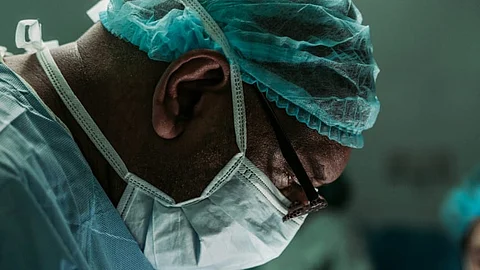

According to the Health Dynamics of India 2022-2023 report, there is a severe shortage of specialist doctors in rural hospitals across India, despite the rising number of medical seats. This increase has not improved the number of specialists in rural hospitals.
Rural Community Health Centres (CHCs), which typically have 30 beds, fall under district hospitals and provide secondary healthcare to approximately 1.6 lakh patients annually. These hospitals usually have general medical officers, anesthesiologists, and paramedics, but critical roles like surgeons, physicians, gynecologists, and pediatricians are left vacant. The report shows that as of March 2023, only 4,413 specialist doctors were available against the requirement of 21,964 in CHCs, a shortfall of 79.9%.
These dismal statistics are a message to the government that it either needs to revise its strategy to improve specialist care in rural areas or completely shut these centers.
Dr Antony K.R, Public Health Specialist
There are 5,491 rural CHCs across 757 districts in India, whereas urban areas have 868 CHCs, which are 56% better staffed. The crisis has worsened over the years.
A comparative study found that primary health centers have less than 4% of the needed doctors. While MBBS doctors continue to serve in rural areas, MD and MS specialists tend to avoid these regions. The report suggests that CHCs are underperforming and could improve with new strategies to enhance patient care.
A recent report, previously known as Rural Health Statistics, highlights a significant shortage of specialist doctors in rural Community Health Centres (CHCs). Of the 5,491 required specialists, rural CHCs are short by 4,578 surgeons (83.3%), 4,078 obstetricians and gynecologists (74.2%), 4,499 physicians (81.9%), and 4,425 pediatricians (80.5%). The shortage is particularly severe in larger states like Madhya Pradesh (94%), Bihar (80.9%), and Tamil Nadu (85.2%).
Experts warn that the lack of specialists burdens district hospitals, depriving rural populations of accessible specialist care. The situation has worsened over time, with the shortfall rising from 17,525 specialists in 2014-15 to 17,551 in 2023. By comparison, the shortfall was only 6,110 in 2005.
Despite the addition of 2,145 CHCs between 2005 and 2023, including in Uttar Pradesh, Tamil Nadu, and Bihar, the issue persists. Antony, an expert, suggests states should halt the practice of upgrading Primary Health Centres (PHCs) into CHCs without ensuring specialist availability. This trend underscores the growing challenge of delivering adequate healthcare services in rural areas.
It is a problem that has persisted for 25 years—from the design of the health facility pyramid to a push towards privatization, there may be a lot of reasons for the specialist crisis beyond cities
Dr T. Sundararaman
The Indian health ministry recently revealed that the country's doctor-population ratio has improved to 1:836, surpassing the WHO-recommended ratio of 1:1000. India now has 731 medical colleges offering 1,12,112 MBBS seats and 72,627 postgraduate seats, a significant increase from 51,348 MBBS and 31,185 PG seats before 2014. This growth is attributed to relaxed norms for opening MBBS courses and a change in the teacher-student ratio for PG programs.
However, Dr. T. Sundararaman from Jan Swasthya Abhiyan notes that few PG doctors are willing to work in rural areas. Despite having sanctioned posts for specialists, many Community Health Centres (CHCs) are unequipped to provide specialist care, making rural work unattractive. Additionally, doctors who invest heavily in private-sector education often avoid rural postings due to lower financial incentives.
Sundararaman suggests deploying family medicine doctors with basic surgery skills to CHCs and reevaluating their functioning. He also believes NEET-PG should offer incentives for doctors committing to rural service. Antony, a former UNICEF India health specialist, advocates for increasing postgraduate seats in essential fields like paediatrics, obstetrics-gynecology, and general surgery to address the rural healthcare gap.
Input from various sources
(Rehash//Yash Kamble/MSM)
